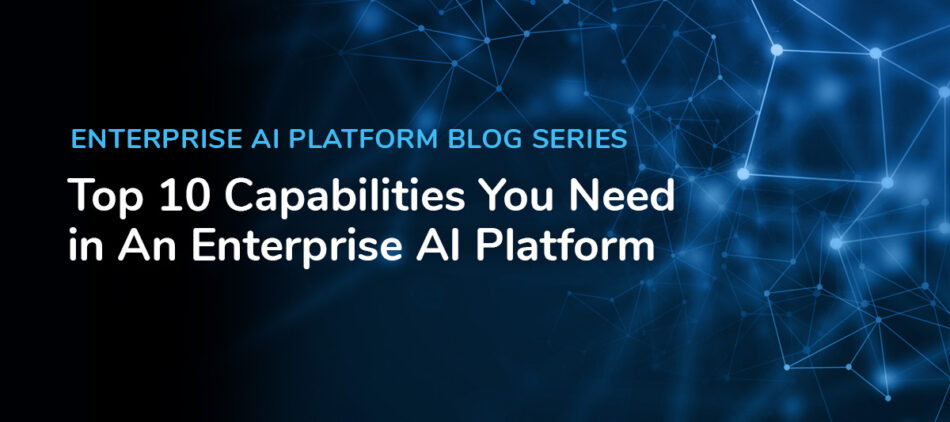
Top 10 Capabilities You Need in An Enterprise AI Platform (Part 1)
Summary:
- While AI investments have increased, many organizations face hurdles in implementing an Enterprise AI practice
- Adopting an Enterprise AI platform can help alleviate many of the challenges and future-proof operations
- Uncover the first five of ten key capabilities you should consider before adopting a platform
Organizations that are data-first typically struggle to process and make sense of their structured and unstructured data. Many have turned to artificial intelligence (AI) and machine learning (ML) to help automate and accelerate the extraction of insights to help them drive their business more efficiently—especially for content-centric processes.
In a recent survey that assessed the investments of large firms since 2012, 91.7% of respondents said they were increasing investment in data and AI. But we’ve seen firsthand how these types of projects can face significant hurdles. Mainly how the proliferation of AI projects, ML models, and APIs required to interconnect an ecosystem of applications bogs down implementation.
To do this at the scale required while reducing costs and time without sacrificing capability, companies need to consider harnessing the power of an Enterprise AI platform seriously. Unifying AI models, model orchestration, data processing, storage, workflow, integration, and monitoring under a single platform, organizations can build applications or ingest AI into their current technology stack to drive enterprise-wide data insights and automation.
If you are new to Enterprise AI, we recommend you read our current blog series on the topic. For those well-versed in the subject and who are looking to adopt an Enterprise AI platform, you should make sure it has these ten capabilities.
Easily deployable input adapters
The platform should have versatile adapters that are easily deployable to support video, audio, image, text, and data ingestion. In addition, it should handle multiple locations as required by your unique use cases, including AWS S3, Google Drive, Box, Dropbox, YouTube, FTP site, or more. If these aren’t supported, you need to determine how easy it would be to develop the adapters you need.
Support different vendor AI models
Called engines by some, AI models often come from many different sources. Some might be proprietary, but most are purchased or licensed from another party. Integrating and maintaining up-to-date models can be complex and time-consuming for each model that you onboard, which only adds to the cost of implementing enterprise-wide AI. You should find a flexible platform to have existing models already onboarded, as well as the option to integrate new ones at a minimal cost.
Support for Training Models
Built-in support with the AI platform vendor is critical in ensuring that you can train models to support your specific use case. For instance, say you are a sports media brand, and you want to use facial recognition to find a specific player on the team. Or maybe you want to find industry-specific keywords within your transcribed media that general models can’t find. Having that specific training will only accelerate the process, increasing accuracy and improving results.
AI Model Orchestration Layer
Platforms you are looking at should have a layer for AI model orchestration that enables dynamic cognitive queuing and AI model “swim lanes.” Using Directed Acyclic Graphs (DAGs) that can sometimes be model specific, you can create complex cognitive workflows and string together multiple disparate cognitive processing categories. With this capability, it makes it easier for you to use multiple categories of models, such as object detection and transcription, to process a video file.
Access to an Intelligent Data Lake
How and where data is stored is critical in determining what AI platform to adopt. Typically, data is stored in a hierarchy, which is not the best practice for leveraging an AI platform. With a data lake, everything becomes flattened, allowing a more effective way to query data that’s collected by AI models, allowing you to search and run analytics on data with greater specificity and precision.
In Part 2, we’ll reveal the remaining top 5 capabilities of an Enterprise AI platform and how Veritone has approached the challenges of Enterprise AI with our proprietary technology. Coming soon.